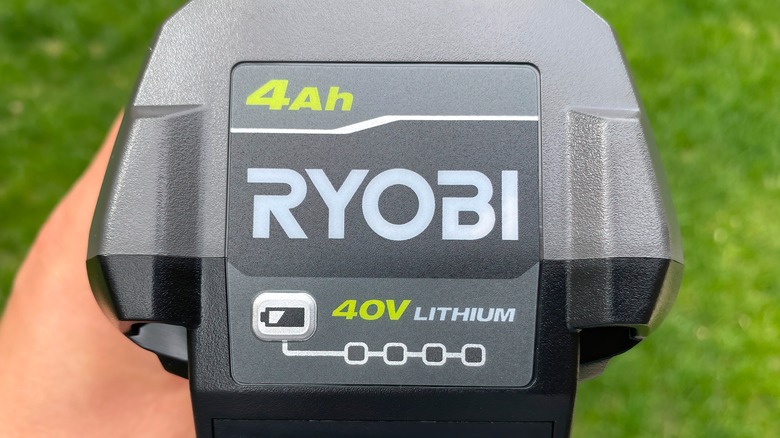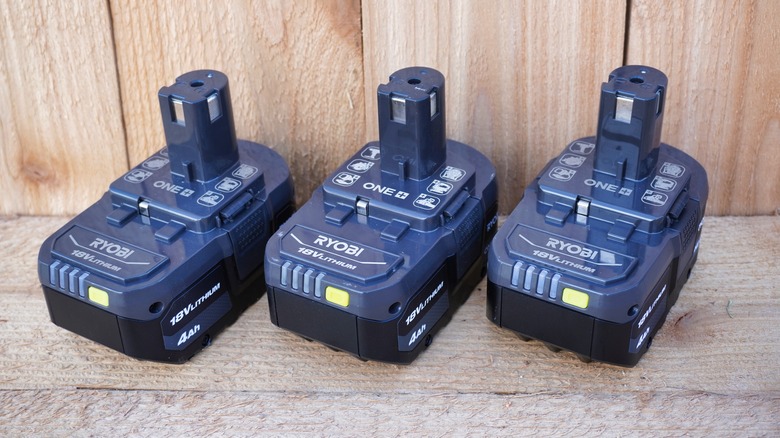
oasisamuel/Shutterstock
There are plenty of power tool lines worth buying, with Ryobi standing as one of the most frequently sworn by. The Ryobi line is loaded with quality tools that can tackle a range of home improvement and professional tasks. For added convenience, Ryobi’s catalog has taken to lithium batteries, packing in strong, long-lasting performance without those pesky cords. Unfortunately, it’s not perfect, as not all tools and batteries are interchangeable.
Advertisement
For example, if you have a 40-volt Ryobi battery laying around and the battery for an 18-volt tool gets lost or dies, you may wonder if you can put the 40V battery in the 18V tool. Sadly, it’s simply not possible as is, and it’s not solely due to the different voltage levels. Rather, it has to do with the mounting mechanism as well, as the two batteries are shaped differently for specific sets of tools. 40V batteries are longer and more slender than their 18V counterparts, which are noticeably flatter and have an additional piece protruding from the top. Much like trying to use Ryobi batteries with other tool brands, you’re out of luck if you want to mix and match 40V and 18V batteries and tools.
Advertisement
If you’re adamant about making this connection, though, it is possible.
Connecting an 18V tool to a 40V battery is possible with excessive effort

Marathon Media/Shutterstock
With the popularization of battery-powered tools, the need for battery power converters has risen. Different power levels between tools and batteries, different brands having unique locking mechanisms, and more have forced folks to find new ways to keep their tools running and batteries from collecting dust. While websites like Amazon are loaded with adapters made with Ryobi in mind, for the specific 40V battery to 18V tool scenario, there aren’t ready-made options out there. Thus, you’ll have little other choice than to get creative if you’re absolutely committed to making it happen.
Advertisement
To make a 40V battery work in an 18V tool, some serious work is required. As evidenced by a post on toolboy’s Corner, making a much more powerful, heavy-duty battery compatible with a less powerful, smaller tool is no easy feat. It involves taking apart an 18V battery, removing key components, adding elements like a 300-watt buck converter, and other wire-clipping, hole-drilling tedium. The end result is being able to use a 40V battery in an 18V tool, but this is a lot of time and effort for little payoff. At this point, it’s probably more time and cost-effective to go out and find the proper battery for your Ryobi tool.
Maybe someday using a 40V battery in an 18V Ryobi tool will be a simple affair, but, evidently, it clearly isn’t there just yet.
Advertisement